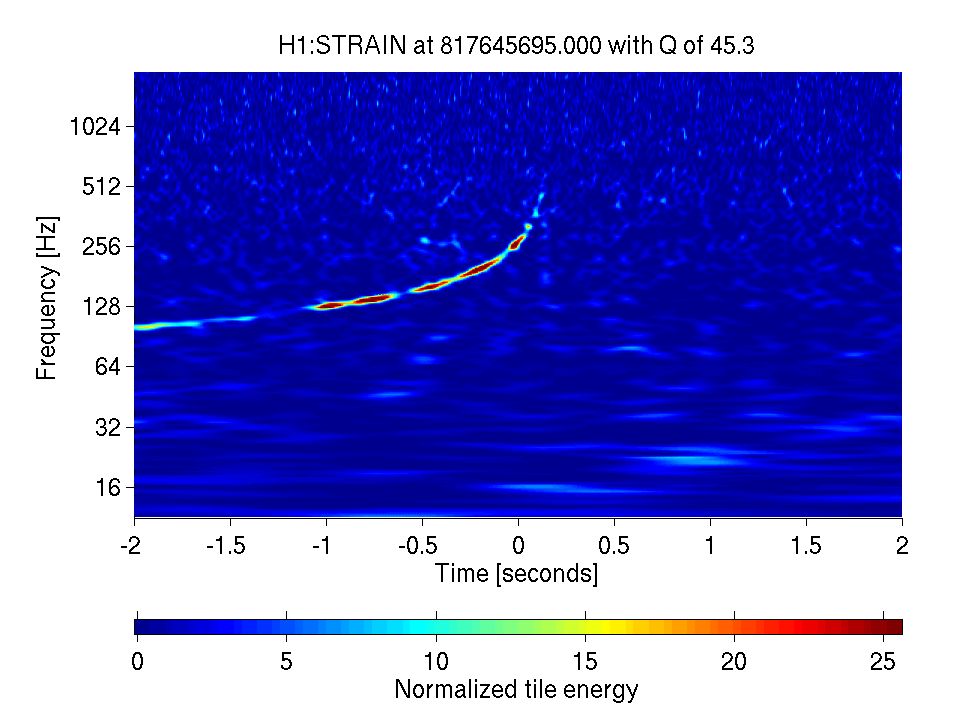O2 Transient Hardware Injections
Hardware Injections
During Advanced LIGO's second observing run (O2), simulated signals were added to the LIGO detectors for testing and calibration. The Virgo detector did not add simulated signals in O2. The simulated signals are known as hardware injections, because they were created by manipulating mirrors in the arms of the interferometers. Times of hardware injections are marked in LIGO data files by injection data quality channels. See the injection bit mask definition for details (the link refers to the 16 kHz files, the data quality categories for the files at 4 kHz are identical and can be found here).
Further details on hardware injections are in Validating gravitational-wave detections: The Advanced LIGO hardware injection system available from arXiv:1612.07864 [astro-ph.IM] and doi:10.1103/PhysRevD.95.062002.
Compact Binary Coalescence Injections
Compact Binary Coalescence (CBC) injections were added at planned times throughout O2. Each CBC injection used a waveform to approximate the signal expected from the inspiral, merger, and ringdown of a binary neutron star system, a neutron star with a black hole, or a binary black hole. A spectrogram of a sample injection can be seen in the image on this page.

Stochastic and Detector Characterization Injections
These injections all happened in times when GWOSC does not have data, i.e. the DATA bit is off.
Tables of Transient Injections
Each injection is listed with the following information:
- GPS_start / GPS_end: The GPS time of the injection segment
- M1 / M2: The mass, in solar units, of each compact object
- Distance: The distance to the simulated source in Mpc.
- Type: The category of transient
The zip file of waveforms contains one file for each injection, named with the GPS start and interferometer. The waveform files are ASCII format, in units of strain, sampled at 16384 Hz.
Tables of transient injections:
Segment Lists when Injections are Not Present
In addition to the log files shown above, information about injection-free times is available in segment lists from the Timeline application. As Virgo did not have any hardware injections during O2, their links below will consist of a single segment.
- The NO_CBC_HW segment lists show times when CBC injections were not present: H1 | L1 | V1
- The NO_BURST_HW segment lists show times when Burst injections were not present: H1 | L1 | V1
- The NO_CW_HW segment lists show times when CW injections were not present: H1 | L1 | V1
- The NO_STOCH_HW segment lists show times when stochastic injections were not present: H1 | L1 | V1
- The NO_DETCHAR_HW segment lists show times when detector characterization injections were not present: H1 | L1 | V1
O2 Continuous Wave Hardware Injections
Continuous Wave Injections
Continuous Wave (CW) injections (also known as pulsar injections) were added throughout O2. Each CW injection corresponds to a simulation of a gravitational wave signal of the form expected from a rapidly rotating, isolated neutron star (often observed as a radio pulsar).
The CW injection system was not active at all times during the run. For a list of times when this system was NOT active, see the O2 CW no-Injection Timelines, or the segment lists ( H1 | L1 | V1)
Note that there were two periods in which NO_CW_HW_INJ=0 (indicating the presence of a CW pulsar HW injection), but the injection signal may NOT be present:
- in H1, from GPStime [1186239618.0 ... 1186524712.0] (corresponding to [Aug 08, 2017 15:00:00 GMT ... Aug 11, 2017 22:11:34 GMT]), some of the pulsar lines were partially subtracted from the data;
- in L1, from GPStime [1180713618.0 ... 1181412018.0] (corresponding to [Jun 05, 2017 16:00:00 GMT ... Jun 13, 2017 18:00:00 GMT]), the pulsar lines were essentially switched off. Therefore, if you are performing an analysis which is searching for these lines, you should explicitly exclude those times.
The parameters are defined as in arxiv:0508096. The parameters f0 and phi0 are both defined at a reference time (epoch) which are chosen to be to either the beginning of LIGO's 3rd science run (S3, GPS 751680013 == 2003-11-01T00:00:00 UTC), or at the start of Virgo's 2nd run (VSR2, GPS 930582085 == 2009-07-02T15:01:10). Two additional parameters are also listed for each simulated pulsar:
Aplus = 0.5*h0*(1 + cos2(iota)) Across = h0*cos(iota)
For more information:
- The recovery of similar pulsar hardware injections is described in the following papers from the LIGO Scientific Collaboration: Phys. Rev. D 85, 022001, 2012 (arXiv).
- The recovery of a few simulated pulsars in Virgo data is described in Astrophys.J.737:93,2011 (arxiv).
- A search for pulsars in O1 data is reported in arXiv:1701.07709.
- A search for pulsars in S6 data is reported in Astrophys. J. 785:2,2014 (arXiv).
- A search for pulsars in S5 data is reported in Astrophys. J. 713:1, 2010 (arXiv).
